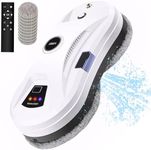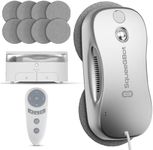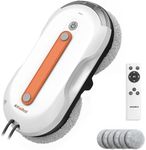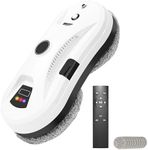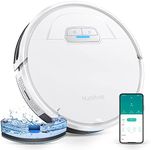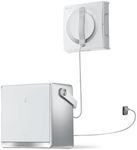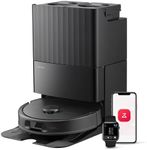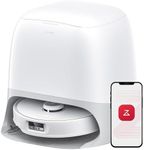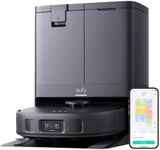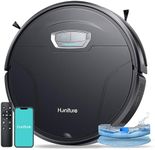Buying Guide for the Best Robotic Window Cleaners
Robotic window cleaners are a convenient solution for maintaining clean windows without the hassle of manual labor. These devices are designed to automatically clean glass surfaces, making them ideal for homes with large windows or hard-to-reach areas. When choosing a robotic window cleaner, it's important to consider various specifications to ensure you select a model that meets your specific needs and preferences. Understanding these key features will help you make an informed decision and find a product that offers the best performance for your situation.Cleaning TechnologyCleaning technology refers to the method the robotic window cleaner uses to clean the glass. This is important because it determines how effectively the device can remove dirt and grime. Some models use a combination of suction and microfiber pads, while others may use rotating brushes or vibrating pads. If you have windows that accumulate a lot of dirt, a model with more advanced cleaning technology might be necessary. For regular maintenance, simpler models might suffice. Consider the typical state of your windows and choose a technology that matches your cleaning needs.
Navigation SystemThe navigation system is how the robotic window cleaner moves across the glass surface. This is crucial for ensuring that the entire window is cleaned efficiently. Some cleaners use a random pattern, while others have a systematic path. More advanced models may use sensors to detect edges and obstacles. If you have large or uniquely shaped windows, a model with a sophisticated navigation system will be beneficial. For standard windows, a basic navigation system might be adequate. Think about the complexity of your window layouts when selecting a navigation system.
Power SourceThe power source of a robotic window cleaner can be either battery-operated or plug-in. This affects the convenience and range of use. Battery-operated models offer more flexibility and are easier to use on windows without nearby power outlets, but they may require frequent recharging. Plug-in models provide continuous power but are limited by the length of the power cord. Consider where your windows are located and how accessible power outlets are when deciding on the power source.
Safety FeaturesSafety features are essential for preventing accidents, especially when cleaning high or hard-to-reach windows. These features can include anti-fall sensors, backup battery systems, and safety ropes. If you plan to use the cleaner on high windows, robust safety features are crucial to prevent the device from falling. For ground-level windows, basic safety features might be sufficient. Assess the height and accessibility of your windows to determine the necessary level of safety features.
Cleaning SpeedCleaning speed refers to how quickly the robotic window cleaner can clean a window. This is important for efficiency, especially if you have many windows to clean. Faster models can save time, but they may be more expensive. If you have a large number of windows or frequently need to clean them, a faster model might be worth considering. For occasional cleaning or fewer windows, a slower model could be adequate. Consider how often and how many windows you need to clean when evaluating cleaning speed.
Noise LevelThe noise level of a robotic window cleaner can affect your comfort, especially if you plan to use it frequently or in quiet environments. Some models are designed to operate quietly, while others may produce more noise. If you are sensitive to noise or plan to use the cleaner in a home office or during quiet times, look for a model with a lower noise level. For less frequent use or in noisier environments, noise level might be less of a concern. Think about where and when you'll be using the cleaner to decide on an acceptable noise level.
